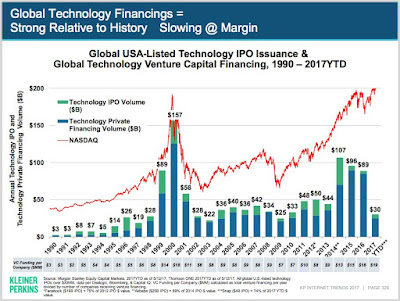Ever since the beginning of the Crisis in 2008, Irish policymakers insisted staking the claims to the heroic burden sharing of the post-Crisis fiscal adjustments across the entire society, the claims closely mirrored by the supporting white papers, official state-linked think tanks and organizations, and even the IMF.
Time and again, independent analysts, myself included, probed the State numbers and found them to be of questionable nature. And time and again, Irish political and policy elites continued to insist on the credit due to them for steering the wreck of the Irish economy out of the storm's path. Until, finally, by the end of 2016, Ireland officially was brought to enjoy falling official debt burdens and drastically declining deficits. The Hoy Grail of fiscal sustainability, delivered by FF/GP and subsequently (and especially) the FG/LP coalitions was in sight.
Well, here's a new instalment of holes that the official narrative conceals. CSO's latest data for full fiscal year 2016 on headline fiscal performance metrics was published earlier this month. It makes for an enlightening reading.
Take a simple chart:
Here, two figures are plotted against each other:
- General Government Expenditure, less Capital Transfers (the bit that predominantly is skewed by 2011 banks resolution measures); and
- Taxes and Social Contributions on the revenue side.
The two numbers allow us to compare the oranges and oranges: policy-driven (as opposed to one-off) revenues and policy-driven (as opposed to banking sector's supports) expenditures. Fiscal discipline is the distance between the two.
And what do we see in this chart?
- Gap between tax revenues and non-capital transfers spending shrunk EUR899 mln in 2012 compared to 2011 and proceeded to fall EUR2.698 billion in 2013, EUR 4.22 billion in 2014, EUR 4.416 billion in 2015 and EUR1.815 billion in 2016. So far - good for 'austerity' working, right?
- Problem is: all of the reductions came courtesy of higher tax take: up EUR 1.567 billion in 2012 compared to 2011, EUR2.107 billion in 2013, EUR4.525 billion in 2014, EUR4.724 billion in 2015 and EUR2.713 billion in 2016.
- All said, over 2011-2016, cumulative reductions in ex-capital transfers tax deficit were EUR14.05 billion, but tax increases were EUR15.66 billion, which means that the entire story of Irish 'austerity' was down to one source: tax take increases. The Irish State did not cut its own spending. Instead, it raised taxes and never looked back.
- In fact, ex-capital transfers spending rose not fall, even as labor markets gains cut back on official unemployment. In 2011, ex-capital transfers Irish State spending was EUR71.403 billion. This marked the lowest point for expenditure in the data set that covers 2011-2016. Since then, 2015 expenditure was EUR72.113 billion and 2016 expenditure was EUR 73.011 billion.
- So there was no aggregate spending austerity. None at all.
- But there was small level of austerity in one category of spending: social benefits. These stood at EUR28.827 billion in 2011, rising to the cyclical peak of EUR29.454 billion in 2012, then falling to EUR28.526 billion in 2013 and to the cyclical low of EUR28.076 in 2014. Just as the labor markets returned to health, 2015 social benefits spending rose to EUR28.421 and 2016 ended up posting expenditure of EUR28.494. So the entire swing from peak spending during the peak crisis to the latest is only EUR418 million. Granted, small amounts mean a lot for those on extremely constrained incomes, so the point I am making is not that those on social benefits did not suffer due to benefits cuts - they did - but that their pain was largely immaterial to the claims of fiscal discipline.
So what do we have, folks? More than 100% of the entire fiscal health adjustment in 2011-2016 has been delivered by the rise in tax take by the State - the coercive power whereby money is taken off the people without providing much a benefit in return. That, in the nutshell, is Irish austerity: charging households, many struggling with debt, loss of income, poorer health and so on, to pay for... what exactly did we pay for?.. I'll let you decide that.









